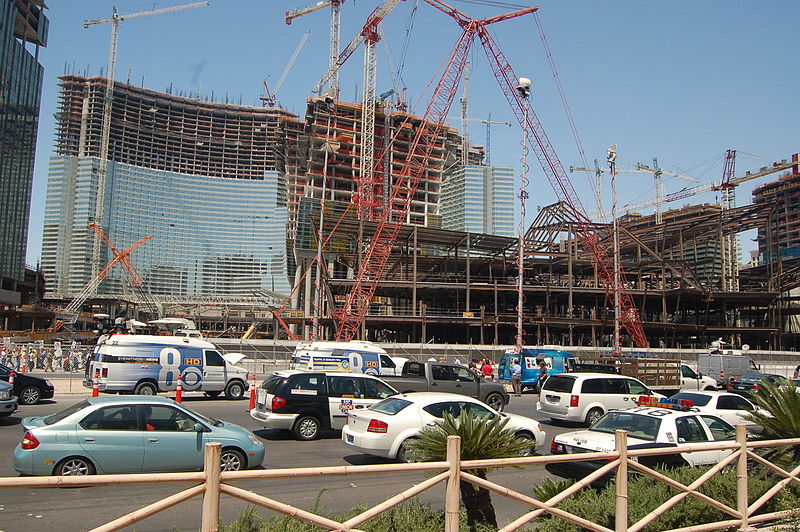The Design-Build Institute of America (DBIA), the only organization that defines, teaches and promotes best practices in design-build, has released new research findings indicating that for the first time more than half of projects above $10 million are being completed through design-build project delivery.
The newly released study confirms that the use of design-build has remained steady since its growth spurt at the end of the last decade, and also that Oregon and the Military sector are leading with the most dollars being spent on design-build projects.
“The growing use of design-build is not surprising,” says Lisa Washington, CAE, CEO/Executive Director of DBIA. “Throughout the last five years, and even through the recession, we’ve seen a large increase in demand for information and training on design-build best practices. Owners from all sectors have been turning to design-build delivery because they recognize the inherent value it brings to any project in any sector of any size.”
Shortly before the economic downturn a little over five years ago, the use of design-build spiked from 29% of the nonresidential market in 2005 to 36% in 2008. Throughout the recession period, design-build use continued to grow, and now with the economy stable and slowly recovering, the use of design-build has held steady at around 40% for the last three years.
RSMeans analyzed detailed data on nearly a million construction projects, state by state, and found that the West Coast is where design-build is the most prevalent. In fact, 70% of construction dollars being spent in Oregon are on design-build projects. California is the second highest at 59% and Washington the third highest state at 56%.
When looking at specific sectors, the military uses design-build on 81% of projects. However, even when military projects are taken out of the equation, Oregon is still the top state due to multifamily residential and industrial sectors’ preference for design-build. Those two industries also lift Michigan to the second place spot in the list of states doing the most non-military design-build.
“The Reed/RSMeans segmentation analysis now includes nine complete years of actual history, statistically supporting observation of trends at the state and industry sector segment levels,” says Tim Duggan, Director of Custom Solutions, Reed/RS Means, one of North America’s largest information providers to the design and construction industry.
RSMeans’ proprietary database of historical and planning construction projects data served as the basis for the study in addition to the incorporation of other publicly and privately available data sources. A copy of the full report, “Design-Build Project Delivery Market Share and Market Size Report,” is available on DBIA’s web site.
Related Stories
Lighting | Mar 4, 2024
Illuminating your path to energy efficiency
Design Collaborative's Kelsey Rowe, PE, CLD, shares some tools, resources, and next steps to guide you through the process of lighting design.
MFPRO+ News | Mar 1, 2024
Housing affordability, speed of construction are top of mind for multifamily architecture and construction firms
The 2023 Multifamily Giants get creative to solve the affordability crisis, while helping their developer clients build faster and more economically.
Multifamily Housing | Feb 29, 2024
Manny Gonzalez, FAIA, inducted into Best in American Living Awards Hall of Fame
Manny Gonzalez, FAIA, has been inducted into the BALA Hall of Fame.
K-12 Schools | Feb 29, 2024
Average age of U.S. school buildings is just under 50 years
The average age of a main instructional school building in the United States is 49 years, according to a survey by the National Center for Education Statistics (NCES). About 38% of schools were built before 1970. Roughly half of the schools surveyed have undergone a major building renovation or addition.
MFPRO+ Research | Feb 28, 2024
New download: BD+C's 2023 Multifamily Amenities report
New research from Building Design+Construction and Multifamily Pro+ highlights the 127 top amenities that developers, property owners, architects, contractors, and builders are providing in today’s apartment, condominium, student housing, and senior living communities.
AEC Tech | Feb 28, 2024
How to harness LIDAR and BIM technology for precise building data, equipment needs
By following the Scan to Point Cloud + Point Cloud to BIM process, organizations can leverage the power of LIDAR and BIM technology at the same time. This optimizes the documentation of existing building conditions, functions, and equipment needs as a current condition and as a starting point for future physical plant expansion projects.
Data Centers | Feb 28, 2024
What’s next for data center design in 2024
Nuclear power, direct-to-chip liquid cooling, and data centers as learning destinations are among the emerging design trends in the data center sector, according to Scott Hays, Sector Leader, Sustainable Design, with HED.
Windows and Doors | Feb 28, 2024
DOE launches $2 million prize to advance cost-effective, energy-efficient commercial windows
The U.S. Department of Energy launched the American-Made Building Envelope Innovation Prize—Secondary Glazing Systems. The program will offer up to $2 million to encourage production of high-performance, cost-effective commercial windows.
AEC Innovators | Feb 28, 2024
How Suffolk Construction identifies ConTech and PropTech startups for investment, adoption
Contractor giant Suffolk Construction has invested in 27 ConTech and PropTech companies since 2019 through its Suffolk Technologies venture capital firm. Parker Mundt, Suffolk Technologies’ Vice President–Platforms, recently spoke with Building Design+Construction about his company’s investment strategy.
Performing Arts Centers | Feb 27, 2024
Frank Gehry-designed expansion of the Colburn School performing arts center set to break ground
In April, the Colburn School, an institute for music and dance education and performance, will break ground on a 100,000-sf expansion designed by architect Frank Gehry. Located in downtown Los Angeles, the performing arts center will join the neighboring Walt Disney Concert Hall and The Grand by Gehry, forming the largest concentration of Gehry-designed buildings in the world.
















